|
March 1982 Radio-Electronics
 [Table of Contents] [Table of Contents]
Wax nostalgic about and learn from the history of early electronics.
See articles from Radio-Electronics,
published 1930-1988. All copyrights hereby acknowledged.
|

June 20, 1939
A large percentage of people today do not remember or were not alive during the
days of analog over-the-air (OTA) broadcast television, so the question, "What Ever
Happened to Channel 1?" is moot for them. For that matter, the standard VHF selector
knob beginning with the number 2 and not 1 was probably was never a matter of concern.
I do remember wondering why there was no Channel 1, but it wasn't until a few
years ago that I learned why that was. By that time, the Internet was full of explanations,
as is the case for most information you want to know. This article from a 1982 issue
of Radio-Electronics magazine lays out the answer to the question in great
detail, and provides some interesting history on the development of television broadcast
standards. Note the gradual moving of "experimental;" i.e., unlicensed, frequencies
higher and higher in the spectrum. During the evolution, amateur radio operators
contributed significantly to the development of methods and equipment to exploit
the higher frequencies that had previously been considered too difficult to work
with to be profitable for commercial exploitation. A June 20, 1939 newspaper clip
of the first wide area television broadcast event by NBC (National Broadcasting
Company) is shown to the left. You will need to read to the very the end of
the entire article to find out what happened to Channel 1.
Ever wonder why your VHF-television dial starts with Channel 2?
Find out why in this brief look at the early days of television and how it all began.
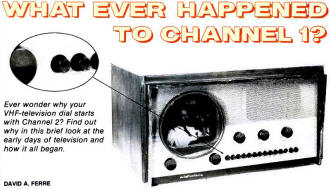
By David Ferre
When a television receiver is purchased in the United States, you can take it
anywhere in the country, plug it in, pull up the "rabbit ears," and tune in a station.
That is possible because we have national broadcasting standards that are common
throughout the country. Yet, at one time commercial television was going to be introduced
to the American public without standards; fortunately, that "experiment" ended before
it even started. But let's not get ahead of our story!
Up to 1934
During the first few months of 1933, RCA demonstrated the first successful all-electronic
television system. Broadcasts were made from the RCA experimental television transmitter,
W2XBS, located at the top of the Empire State Building in New York City. The characteristics
of that early all-electronic television system were modest:
1933 RCA Empire State Building
Lines: 240
Frames: 24 per second
Scanning: sequential (no interlacing)
Bandwidth: 2 MHz
Video carrier: AM modulated, full sideband
Audio carrier: AM modulated, full sideband
Yet, the results were far better than any mechanical television system had ever
accomplished. For those experiments, the video carrier was at approximately 45 MHz.
It may be hard for us to appreciate fully what RCA had accomplished in 1933.
But to give you an idea: Many of the experimental television broadcasters were still
using frequencies in the 2 to 3 MHz range, and bandwidths of 100 kHz. In addition,
the earlier systems were mechanical using gears, motors, mirrors, etc. As television
advanced, each step pointed towards non-mechanical systems, and higher bandwidths
and carrier frequencies.
The Federal Communications Commission was established by an act of Congress on
June 22, 1934. It was about that time that a portion of the VHF radio spectrum was
allocated to television for the first time (see Fig. 1). Previously, any frequency
above 30 MHz was available to experimenters. Those experimenters included a number
of pioneering amateur radio operators; there were also experimental stations that
included television. In 1934, the experimenters were moved to the frequencies above
110 MHz, while television was allocated two bands, 42-56 and 60-86 MHz. There were
no channels associated with the allocations, but it was a beginning; television
was making its first move.
1934 to 1938
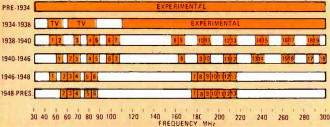
Fig. 1 - How the television allocations have changed over the
years. This chart shows the approximate frequencies of the channels; the exact frequencies
are given in Table 1.
Progress was slow for television during those years. The depression was at its
worst, and even mighty RCA lost money. But advances were made in RCA's all-electronic
system. In June, 1936, RCA announced the start of a massive field test. A total
of 100 experimental television receivers were distributed to RCA employees for placement
in their homes and offices (see Fig. 2). RCA then began regular television broadcasts
from W2XBS, using their new Radio City television studios. Those studios were linked
to the Empire State Building transmitter by an experimental 177 MHz radio link and
a coaxial cable. The composition of the television signal used for that test was
as follows:
1936 RCA Radio City
Lines: 343
Frames: 30 per second
Scanning: interlaced (2:1)
Bandwidth: 5.75 MHz
Video carrier: AM modulated, full sideband
Audio carrier: AM modulated, full sideband
On June 15, 1936, the FCC began informal hearings concerning the radio spectrum
above 30 MHz. There was an increasing demand for those frequencies and a new word
began to be heard at the FCC; that word was standards. The Radio Manufacturers Association
(RMA), the trade association for the radio and television equipment manufacturers,
had formed a subcommittee on television. They attended the June, 1936 hearings because
of their interest in the possible future commercialization of television. In addition
to urging definite channel allocations, the RMA had a set of television channel
standards to present (see Fig. 3-a). Although those standards were incomplete in
some respects, one important recommendation that the RMA made to the Commission
was that the bandwidth of a television channel should be 6 MHz- the same bandwidth
that is used today. The RMA television standards were:
1936 Radio Manufacturers Association
Lines: 441
Frames: 30 per second
Scanning: interlaced (2:1)
Bandwidth: 6 MHz
Video carrier: AM modulated, full sideband
Audio carrier: AM modulated, full sideband
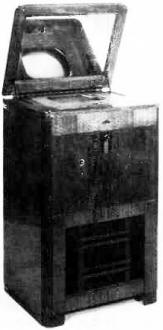
Fig. 2 - One of the last in existence, this receiver was one
of the ones used in RCA's test of the first all-electronic television system. The
vertically-mounted picture tube was viewed through a mirror in the cabinet top.
It is interesting to note that the proposed 441-line standard was beyond the
capabilities of any system that had been demonstrated up to that point. It wasn't
until eight months later, on February 11, 1937, that a manufacturer (Philco) gave
a convincing demonstration of a television system that completely met the RMA standards.
The FCC hearings that had started on June 15, 1936, resulted in the allocation
of 19 television channels, each with a bandwidth of 6 MHz. The new allocations,
which are shown in Fig. 1 and Table 1, became effective October 13, 1938. The RMA
revised and completed their set of television standards, which were essentially
the same as the 1936 standards except for one important difference: The video carrier
would now be transmitted with a full upper sideband and only a partial lower sideband,
as shown in Fig. 3-b. That vestigial sideband system was eventually adopted by the
FCC and is used today.
Television now had allocations and channel numbers. Our mysterious Channel 1
was assigned to the 44 to 50 MHz band as shown in Table 1. RCA's experimental station
quickly received a permit for one of those new television allocations and selected
Channel 1!
1938 to 1940
The television industry was generally pleased with the FCC allocation of 19 TV
channels. They were hoping for a continuous band of frequencies to simplify tuner
design, and were somewhat disappointed that 12 of the 19 channels were above 150
MHz; those frequencies were virtually unused, and thought to be useful only for
television relay networks. But the seven channels between 44 and 108 MHz were enough
to begin plans for commercial television operation. By then it was believed that
the RMA standards would be adopted by the FCC and commercialization could begin.
But not everybody agreed with the RMA standards, and the FCC wasn't about to approve
any standard unless the television industry was in almost total agreement.
On October 20, 1938, just one week after the allocations became effective, RCA
announced that regular television programming would begin as a "public service"
on April 30, 1939. That date coincided with the opening of the 1939 New York World's
Fair. A number of manufacturers began producing television receivers, and by the
opening of the fair they were in the stores and ready for sale. The opening ceremonies
of the fair were broadcast on Channel 1 by RCA's W2XBS, and featured the President
of the United States. After that event, broadcasts were scheduled on a regular basis.
By the end of May 1939, large department stores, such as Macy's in New York,
offered as many as nine different models for sale; those were supplied by three
manufacturers (Andrea; DuMont, and RCA). Screen sizes for those television sets
ranged from 5 to 14 inches, and prices ranged from $189.50 to $600.00. Most of the
early sets were complete receivers, but one, the mode! 7T-5 from RCA (shown in Fig.
4), had no audio section; if audio was desired, it had to be connected to a compatible
RCA receiver. Unfortunately, sales of those early television sets were not very
good, and by the end of 1939 fewer than 400 of them had been sold in the New York
area.
All of the major television broadcasters (incidentally, the stations were still
considered experimental) had adopted the RMA standards by the end of 1939. That
included the stations in New York City, Chicago, Los Angeles, and Schenectady. The
FCC was urged to adopt the RMA standards so that commercialization could begin.
The FCC responded to the pressure from the TV industry by publishing rules for limited
commercialization on December 22, 1939. It was a kind of Christmas present for the
television industry.
At the time those rules were published, the FCC also announced that hearings
would be held in January, before establishing a date for limited commercialization.
At those hearings, it was made clear to the FCC that many of the broadcasters did
not agree that the RMA standards were the best. Philco urged the FCC to adopt their
system of television with 605 lines and 24 frames-per-second. DuMont wanted standards
that included 625 lines and 15 frames-per-second. In addition, there was some vague
talk about something called color television. Nevertheless, in an order issued on
February 29, 1940, the FCC ruled that limited commercialization could begin on September
1, but warned that nothing should be done to encourage a large public investment
in television receivers. They refused to adopt any standards, with the implication
that each of the broadcasters could use whatever standards they liked best, with
the public deciding who had the best system.
RCA responded to the authorization for limited commercialization with full-page
newspaper ads in early March announcing the "arrival of television," and ordered
the immediate production of 25,000 television receivers. The FCC realized that limited
commercialization wasn't going to work, as the sale of thousands of television sets
would, in effect, "freeze" the standards, making a change to other standards almost
impossible. Within a few days of the RCA newspaper ads, the FCC's permission for
limited commercialization was withdrawn.
Television was also about to undergo some more changes. Frequency Modulation
(FM) had been introduced by its developer, Major Edwin H. Armstrong, in 1935. Shortly
after its introduction, FM was granted five experimental frequencies between 42.6
and 43.4 MHz. By 1940, the FCC had 150 applications for experimental FM stations
on file that could not be processed because of lack of frequencies. As a result
of hearings held on March 18, 1940, the FCC assigned FM a continuous band of frequencies
(that was done to simplify tuner design), and expanded the FM allocation to include
the frequencies from 42 to 50 MHz. The new allocation included the 44 to 50 MHz
band that had previously been assigned to Channel 1.
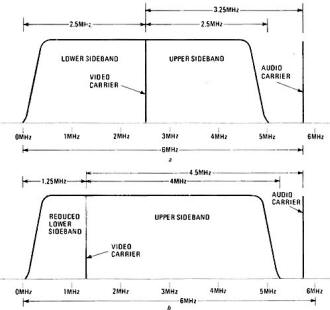
Fig. 3 - The first standardization of a television signal, the
system shown in a featured full upper and lower sidebands. A later revision, shown
in b, featured a reduced lower sideband. That vestigial sideband technique is the
one is use today.
But that is not what happened to Channel 1! The TV channels were renumbered
with Channel 1 now assigned to 50-56 MHz band and the remaining channels were
shifted around the spectrum. But when the smoke cleared, the television industry
had lost one channel, leaving them with 18 allocations.
The new FM channels and the changes in the television allocations became effective
on June 20, 1940; commercial FM broadcasting was authorized to begin on January
1, 1941.
1940 to 1946
When the revised 18-channel TV allocations went into effect, the television industry
was unhappy, to say the least. The limited commercialization plan was suspended;
the FCC continued its refusal to set television standards; a television channel
was lost to FM, and, because of the changes in the allocations, many of the experimental
TV broadcasters had to go off the air to complete extensive transmitter changes.
For example, the RCA experimental transmitter, W2XBS, had been operating on the
old Channel 1 (44-50 MHz); because of the changes, they were forced to switch
to the new Channel 1 (50-60 MHz).
However, soon after that things began to look up. A member of the RMA had met
with the FCC to ask just what the television industry could do to win approval of
a set of standards. The FCC replied that if the industry could agree on one set
of standards, they would be approved without delay. Quickly, the RMA organized the
National Television Standards Committee (NTSC). The NTSC was open to all major interests
in the television field whether they were associated with the RMA or not. Eventually,
over 160 individuals became associated with the NTSC. On July 31, 1940, under the
RMA's sponsorship and with the FCC's blessing, the NTSC held its first meeting.
With the opportunity to propose a set of standards to the FCC, you might have
expected that the NTSC would simply have endorsed the existing RMA standards, but
that is not what happened. Every aspect of the television standards question was
reexamined and discussed at length. On January 27, 1941, the NTSC met with the FCC
and presented a progress report. The preliminary NTSC standard presented to the
FCC at that meeting closely paralleled the RMA standards. That seemed to indicate
that the RMA standards were essentially correct. There was one important difference,
however: The audio carrier was to be FM. The FCC had one reservation about the proposed
standard - they felt that the 441-line standard recommended by the NTSC was too
low. That standard went way back to the first RMA standards of 1936, when both video
sidebands were transmitted. It was common knowledge that the vestigial sideband
system in use since 1938 allowed a much higher line count and, accordingly, a better
television picture. The NTSC agreed to reexamine that question and said that it
would present more information at hearings that were to be held in March, 1941.
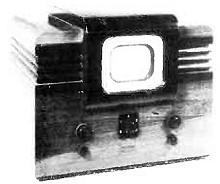
Fig. 4 - This early television set, the RCA model TT-5, was one
of the first offered for sale to the general public. It featured a five-inch screen,
five-channel coverage, but no audio section; It sold for $199.50 in 1939.
Those hearings were held on March 20, 1941. The NTSC standard that was presented
at the hearing was almost identical to the one proposed earlier, except that the
number of lines was increased to 525 lines. (Although the number of lines seemed
to be random, it was not. The line count had to be an odd number and to be related
to few multiples of odd numbers, such as 3x3x7x7=441 or 3x5x5x7=525, for example.
That was necessary for generation of the synchronizing pulse.) The new standard
was as follows:
1941 NTSC Standard(current)
Lines: 525
Frames: 30 -per -second
Scanning: interlaced (2:1)
Bandwidth: 6 MHz
Video carrier: AM modulated, vestigial sideband
Audio carrier: FM modulated, ±75 kHz deviation (later ±25 kHz deviation)
Virtually all of the participants in the hearings (they went on for four days)
agreed that the NTSC Standards were correct and should be adopted quickly. The FCC
was convinced that the industry had finally agreed and the NTSC Standards were adopted
as the national standard in April 1941. The effective date was July 1, 1941; commercial
television could finally begin!
When that "Opening Day" for commercial television finally arrived, only two television
stations were licensed and ready for operation; WNBT (NBC, old W2XBS) transmitting
on Channel 1, and WCBW (CBS, old W2XAX) transmitting on Channel 2. Both of
those stations were in New York City. Soon after (on September 1, 1941) WPTZ in
Philadelphia, transmitting on Channel 3, came on the air. By the spring of 1942,
a total of four commercial stations were in full operation and 10,000 television
receivers had been sold.
Television's growth was halted by World War II, with the Defense Communications
Board ordering the construction of new radio and television stations to end. Television
programming was reduced to just four hours per week for the broadcasters already
in operation (all devoted to war-related activities).
As the end of the war approached, the FCC was faced with a monumental task. The
war effort had brought about an extraordinary leap in communications technology.
Frequencies that had been thought to be useless were now in tremendous demand. The
entire spectrum had to be reexamined, with new allocations made and old ones revised.
The FCC began by holding hearings on September 28, 1944. They were promptly overwhelmed.
The 18-channel television allocations in effect since 1940 were attacked by one
group as being wasteful of the valuable VHF spectrum, yet another group urged an
increase to 26 channels. Others urged the FCC to move all of the television allocations
to UHF frequencies immediately. But the television industry argued that television
had waited long enough and should develop now, using the existing allocations.
After hearings that were held on February 14, 1945, it became clear that no group
was going to get everything it wanted. In the FCC's final decision, released on
June 27, 1945, television's allocation was reduced to 13 channels, and FM was moved
from the 42-50 MHz slot to 88-106 MHz (the band was later increased to 88-108 MHz).
The television interests were very unhappy that they were left with only 13 channels,
but the FM interests suffered a major blow because all of the existing stations
had to go off the air and switch to new frequencies. In addition, 500,000 home FM
receivers were now obsolete.
The reduction to 13 television channels was accompanied by new and reorganized
frequency allocations (see Table 1). Again the broadcasters had to go off the air
to switch frequencies.
Our Channel 1 was still around, but it was moved back to the 44 to 50 MHz
band that it had occupied from 1938 to 1940. In addition, there was a restriction
for Channel 1: It could only be assigned as a community channel, and was limited
to a maximum power of 1000 watts. Other TV channels were for metropolitan stations,
with a maximum power of 50,000 watts permitted. All channels, except Channel 6,
were shared with fixed and mobile services - a fact that left the television interests
concerned about interference. The changes became effective March 1, 1946.
1946 to 1948
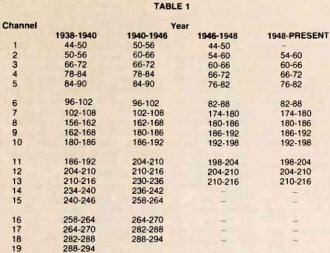 Even with the reduced number of channels,
the boom was on! Manufacturers quickly began producing television receivers, transmitters,
antennas, etc. New television stations were being built all over the United States.
The FCC had identified the top 140 metropolitan cities and assigned each at least
one channel; a total of 400 were to be allotted. The FCC received many more applications
than it had available channels. In an effort to provide the public with as many
channels as possible, the FCC routinely threw away the "safety factor" of mileage
between licensed transmitters. Television receiver sales were doing very well, with
175,000 sold by the end of 1947. Manufacturers were selling television sets as fast
as they could be made, even though the sets were rather expensive. (A typical set
with a 10 -inch screen sold for $375.) Even with the reduced number of channels,
the boom was on! Manufacturers quickly began producing television receivers, transmitters,
antennas, etc. New television stations were being built all over the United States.
The FCC had identified the top 140 metropolitan cities and assigned each at least
one channel; a total of 400 were to be allotted. The FCC received many more applications
than it had available channels. In an effort to provide the public with as many
channels as possible, the FCC routinely threw away the "safety factor" of mileage
between licensed transmitters. Television receiver sales were doing very well, with
175,000 sold by the end of 1947. Manufacturers were selling television sets as fast
as they could be made, even though the sets were rather expensive. (A typical set
with a 10 -inch screen sold for $375.)
But problems began to appear. Propagation theories at that time predicted that
television signals would not be received over the horizon - but they were, quite
readily. So, even with just 50 stations on the air, interference problems were beginning
to appear. Meanwhile, the FCC had reduced the minimum distance between stations
using the same channel to just 80 miles. An engineering study released by the FCC
warned of interference problems if immediate action wasn't taken. That led to an
FCC report, issued on May 5, 1948, that ruled that television could no longer share
its frequencies with fixed and mobile services, and that the 72 to 76 MHz band
could be used for fixed radio services only.
But where could the mobile services be located if they could no longer share
the television allocations, and could no longer use the 72 to 76 MHz band?
There was only one place to go - the television industry would have to give up another
TV channel. But which channel would that be? The American Radio Relay League (an
association of amateur radio operators) urged that Channel 2 be deleted so that
the second harmonics of the 28 to 29.7 MHz amateur radio band would not interfere
with television reception. The television industry, although not pleased about losing
yet another TV channel, agreed that 12 clear channels were preferable to 12 shared
channels. If they had to lose a channel, they preferred that it be Channel 1,
because its absence would have the least impact on commercializing television.
The FCC went along with the television industry's position, and on June 14, 1948,
Channel 1 was deleted from the allocation plan. Channel 1's frequencies
were assigned to the fixed land and mobile services. At the same time, the FCC decided
not to renumber the channels - that's what happened to Channel 1!
Posted March 6, 2020
|
















